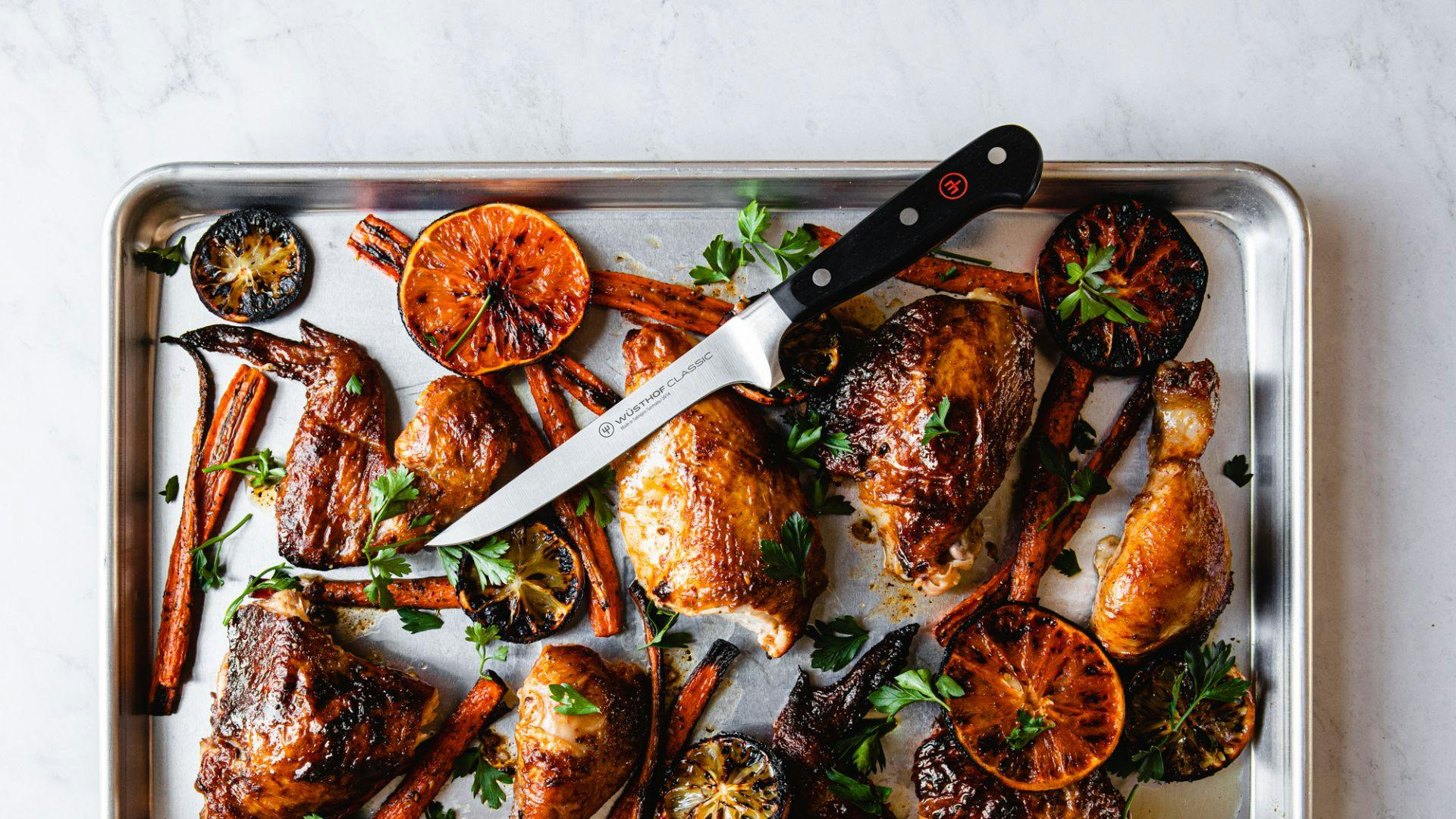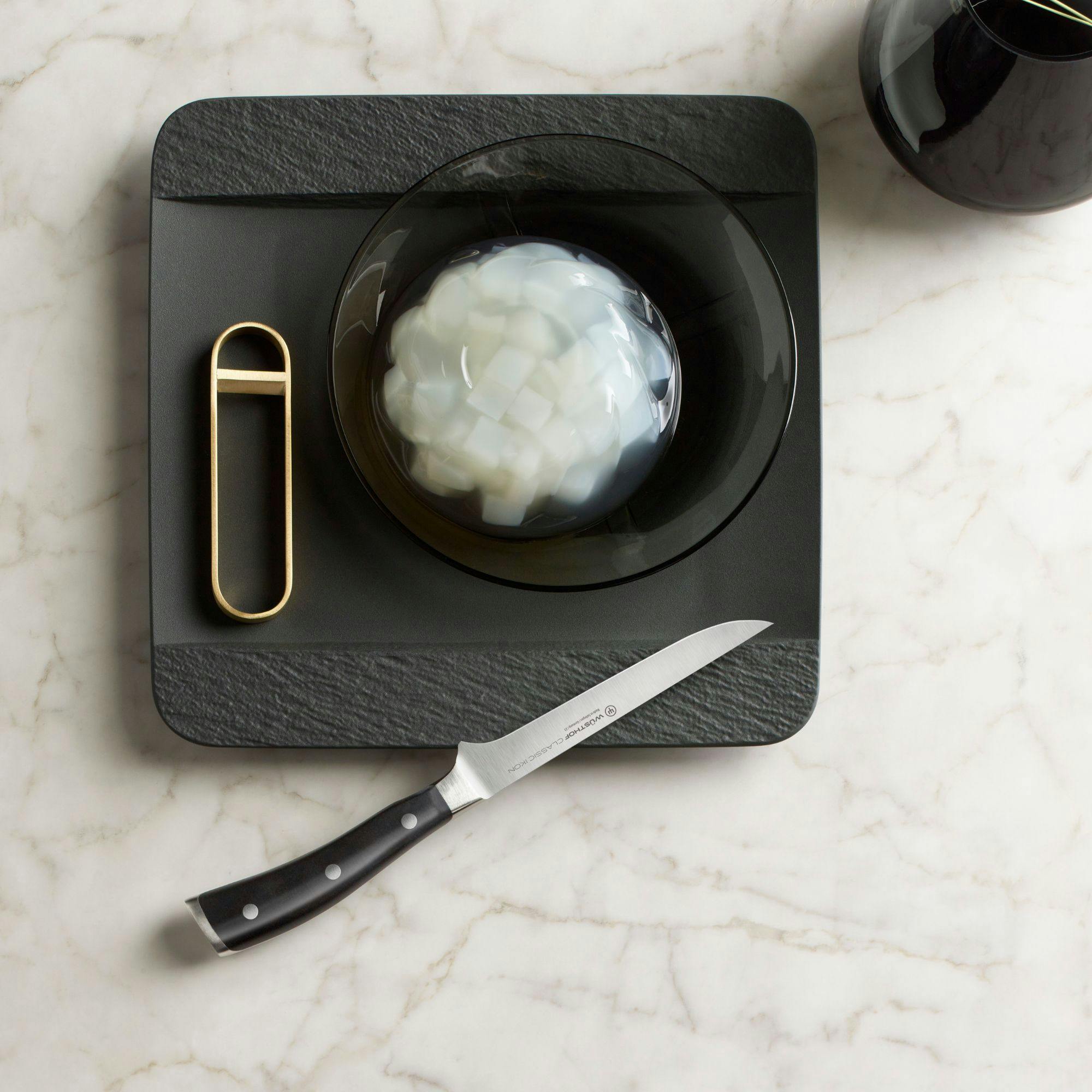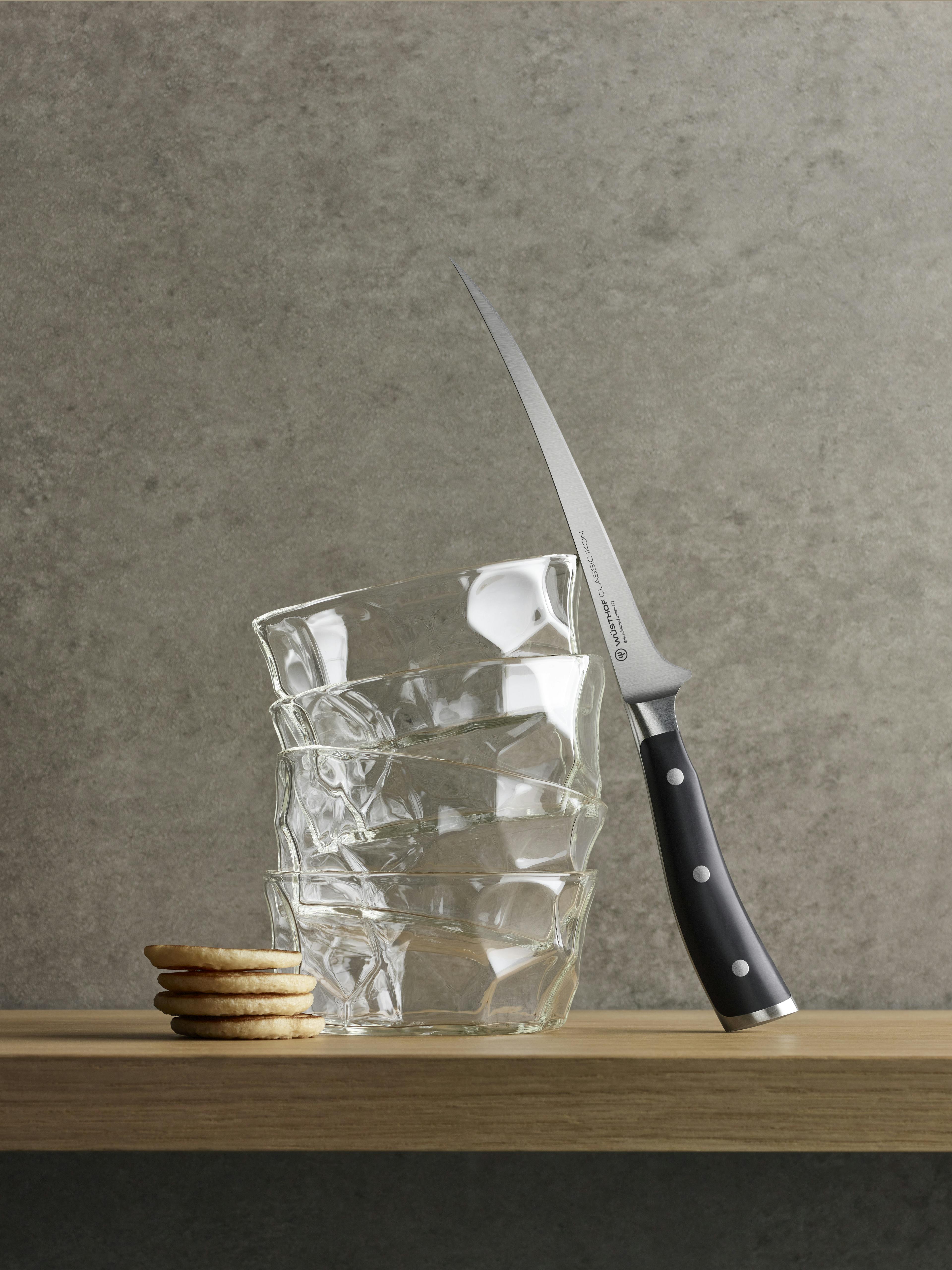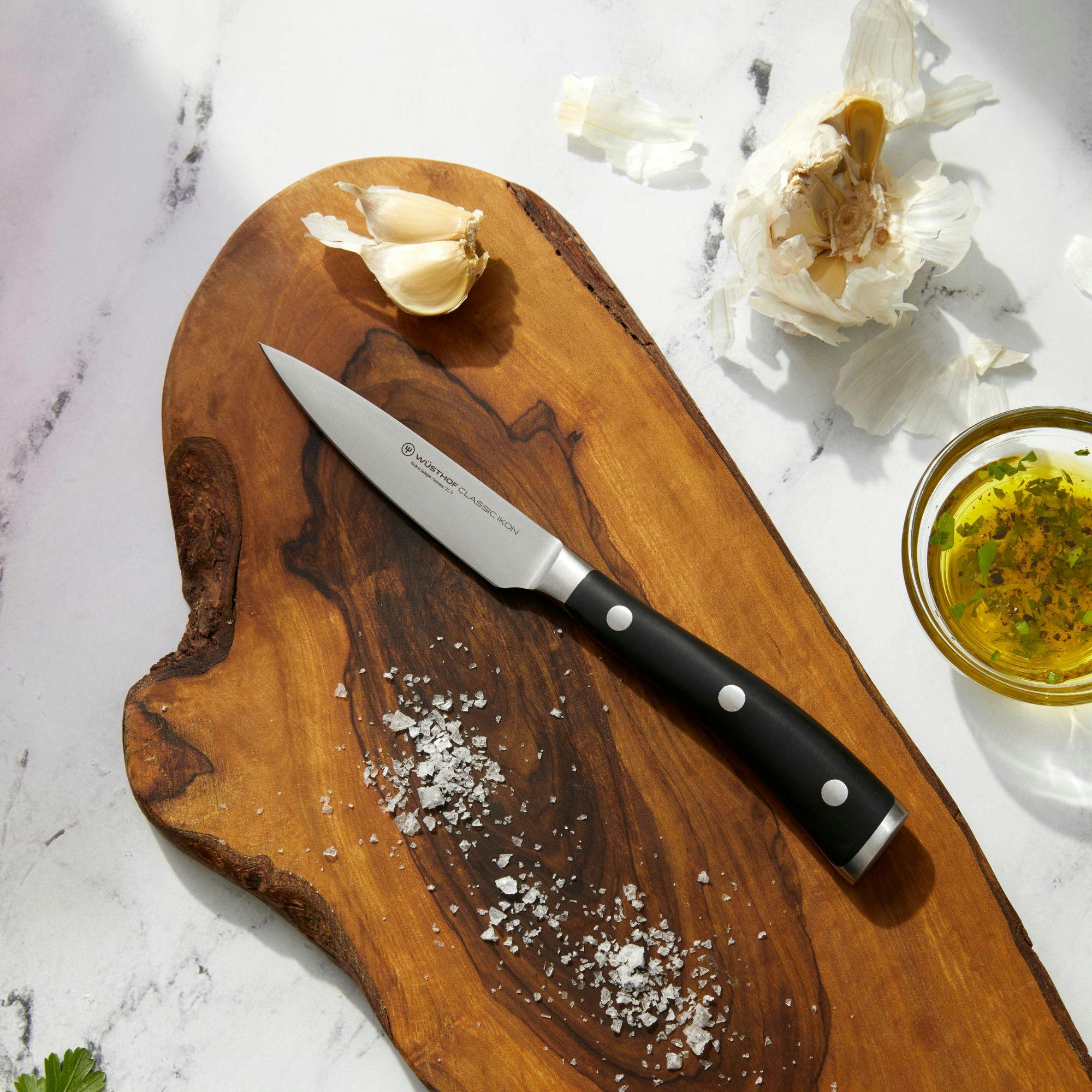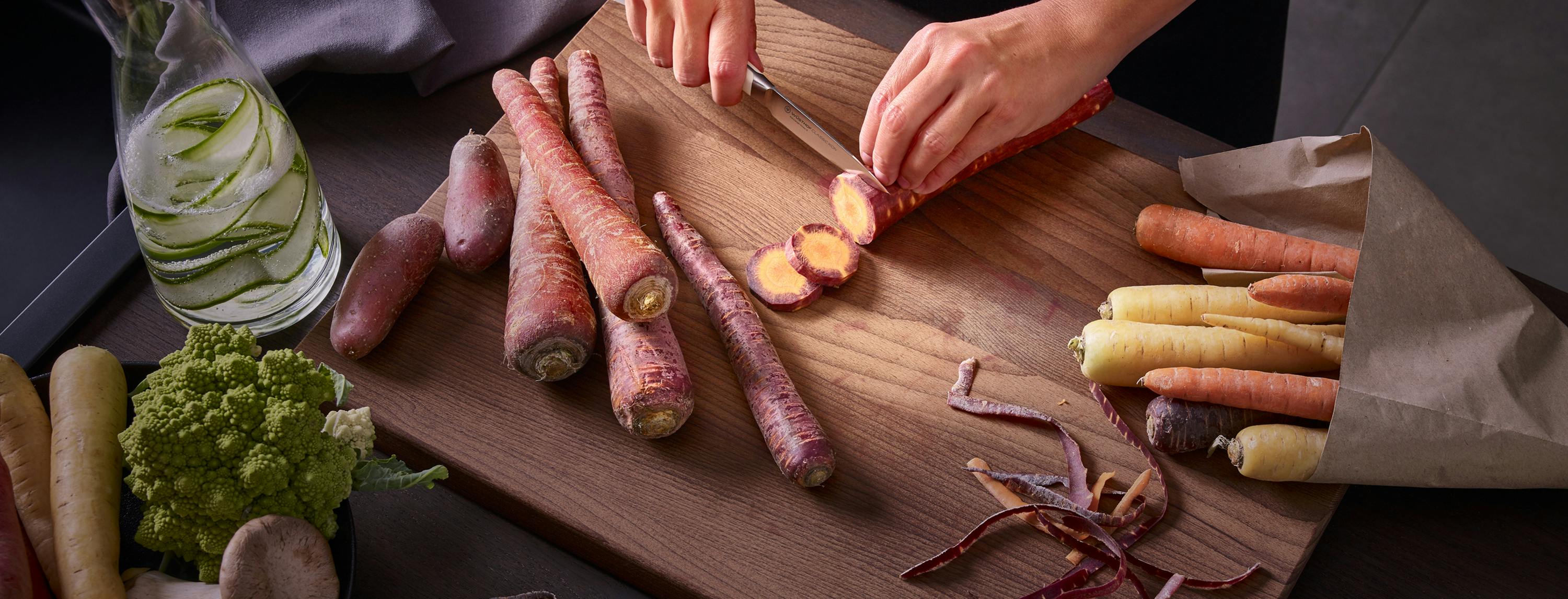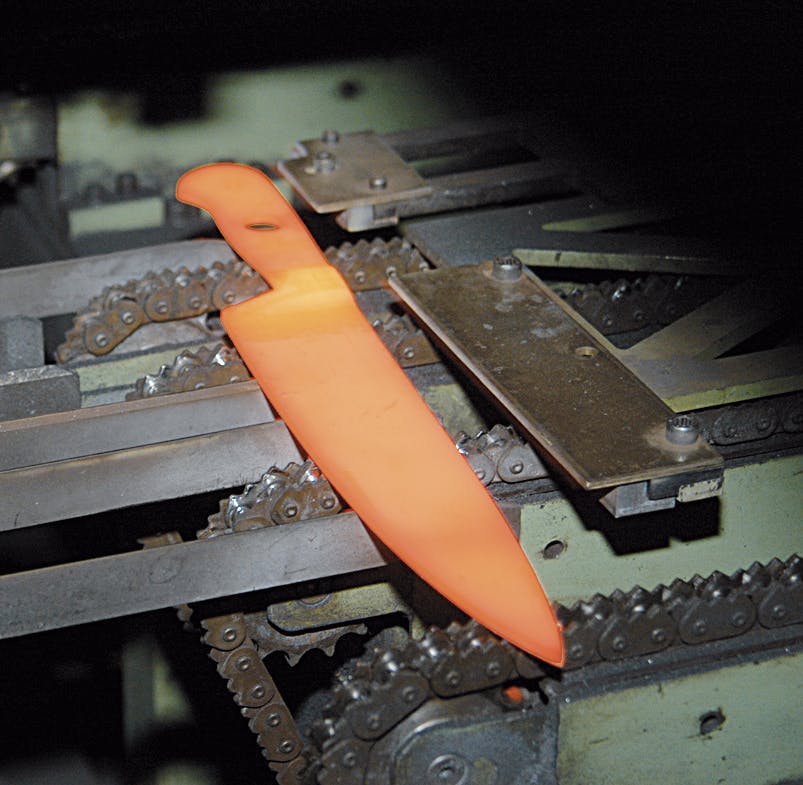In the words of our seventh-generation co-owner Harald Wüsthof, “Perfect knife skills are your secret ingredient in every dish.” For most of us, those skills don’t need to come from countless hours of work in professional kitchens — instead, we can hone our knife craft by finding the right tools for the right tasks.
Boning Knives vs. Fillet Knives
Which one is right for you?
This notion brings us to two knives that, despite being invaluable in the kitchen, sometimes cause a little confusion. We’re talking about boning knives and fillet knives (which are also occasionally called “fish knives” or “fish filleting” knives). You might be wondering: What are these specialty knives used for, and are they interchangeable?
Boning Knife:
WÜSTHOF boning knives are perfect for simple butchering tasks that require removing bones, ligaments, tendons, and larger bits of fat. You can recognize a boning knife by its lighter weight and thin, narrow, slightly curved blade, which makes it particularly easy to maneuver along the contours of a bone. If you’d like to debone a chicken breast, for instance, or remove the pin bones from a side of salmon, a boning knife is your go-to tool.
Fillet Knife:
A WÜSTHOF fillet knife is similar in heft and style, but has a thinner, more flexible blade that’s excellent for precise cuts. It’s useful for filleting fish and smaller cuts of meat, as well as deftly removing the skin or scales from, say, a piece of halibut. Due to the fillet knife’s uniquely pliable blade, it’s a great tool for carving and slicing more delicate cuts without causing tears or damage. The best fillet knife molds to bones and meat alike, making controlled knifework a breeze.
What They're Used For:
Let’s say you have some beautiful chicken thighs that you’d like to debone and roast in a cast-iron skillet until the skin is golden-brown and crispy. Step one, grab your trusty boning knife. Next, place the chicken thigh skin-side down on a cutting board and secure one edge with your non-knife hand. Now, holding the blade as close to the bone as possible with your knife hand, and always taking care to cut away from your fingers, run the blade diagonally to the bone, slicing the meat along the bone on both sides. Once the bone is exposed, use the tip of the knife to slice under the bone to loosen and remove it. You’ve got this — practice and the best tools make perfect!
Now, what if you have some delicious monkfish tails that you’d like to skin and fillet? First, locate your sharp WÜSTHOF fillet knife. Then place the monkfish skin-side down on a cutting board. Use your non-knife hand to firmly hold the fish on the flat surface. Meanwhile, use your knife hand to run the blade between the thick monkfish skin and the steaky white meat until about two inches of skin has been cut away from the flesh. Now, flip the tails around so your non-knife hand can firmly grasp the loose skin, pulling it taught away from the rest of the fish. Wiggle your fillet knife gently but intentionally along the junction between the skin and the monkfish flesh to slice away the rest of the skin. Amazing job! It’s finally time to cook the delicious fish in a frying pan with a knob of butter, lemon, and fresh rosemary.
The best thing about specialty knives, like boning and fillet knives, is that they encourage us to get more intentional with our food preparation. Would you like to transform a thick piece of cod into perfect fillets? Grab a fillet knife! Are you looking for skin-on chicken breasts, but the boneless cuts are nowhere to be found? Luckily, you have a boning knife handy. These knives empower us to take control over our ingredients and our recipes, providing a much-needed boost to our daily routines by giving us the tools to cook exactly what we’re craving.

